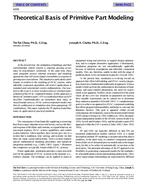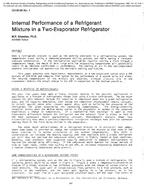Air-conditioning systems usually use only about 85% of their evaporator coils. The other 15% or so is used to superheat the refrigerant so that the compressor will be protected from liquid slugging. This practice results in excessive evaporator volume. In mobile air-conditioning (MAC) systems, where the space available for the evaporator is limited, the evaporator should be used fully to reach maximum evaporator efficiency. Reports on the design and testing of a new liquid overfeeding (LOF) MAC system that can use 100% of the evaporator effectively. This LOF system is designed so that not all of the liquid refrigerant is evaporated from the evaporator. The excess low-pressure liquid flows into an accumulator-heat exchanger where it is boiled off by the warm, high-pressure liquid leaving the condenser. This design not only allows 100% use of the evaporator but also reduces the system’s power consumption (per unit mass flow) and improves compressor reliability. Test results for the LOF, MAC, compared with thermal expansion valve and metering valve MAC systems, indicated an increase of 20% in the system’s cooling capacity and coefficient of performance (COP) at a compressor speed of 2,020 revolutions per minute (rpm). Because the LOF system is easy to implement, it is expected to increase the cost of MAC systems only marginally.
KEYWORDS: experiment, motor cars, unit air conditioners, efficiency, evaporators, coils, designing, testing, cooling, air conditioning, refrigerants, R134a, fluid flow, flow rate, compressors, accumulators, heat exchangers, energy conservation, comparing, performance
Citation: Symposium, ASHRAE Trans. 1994, Vol.100, Part 2
Product Details
- Published:
- 1994
- File Size:
- 1 file , 420 KB
- Product Code(s):
- D-17517


